Discover 35 hidden attractions, cool sights, and unusual things to do in Lisbon (Portugal). Don't miss out on these must-see attractions: Belém Tower, Mosteiro dos Jerónimos, and Lisbon Oceanarium. Also, be sure to include Museu Coleção Berardo in your itinerary.
Below, you can find the list of the most amazing places you should visit in Lisbon (Lisbon).
Table of Contents
Belém Tower
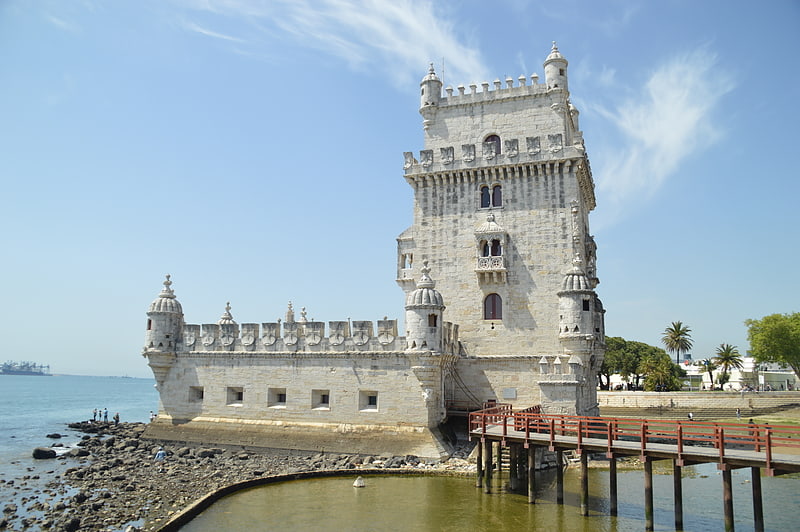
Also known as: Torre de Belém
Landmark medieval defensive tower. Belém Tower, officially the Tower of Saint Vincent is a 16th-century fortification located in Lisbon that served as a point of embarkation and disembarkation for Portuguese explorers and as a ceremonial gateway to Lisbon. It was built during the height of the Portuguese Renaissance, and is a prominent example of the Portuguese Manueline style, but it also incorporates hints of other architectural styles. The structure was built from lioz limestone and is composed of a bastion and a 30-metre, four-storey tower.
Since 1983, the tower has been a UNESCO World Heritage Site, along with the Jerónimos Monastery. It is often portrayed as a symbol of Europe's Age of Discoveries and as a metonym for Portugal or Lisbon, given its landmark status. It has incorrectly been stated that the tower was built in the middle of the Tagus and now sits near the shore because the river was redirected after the 1755 Lisbon earthquake. In fact, the tower was built on a small island in the Tagus river near the Lisbon shore.[1]
Address: Av. Brasília, 1400-038 Lisboa (Belém)
Mosteiro dos Jerónimos
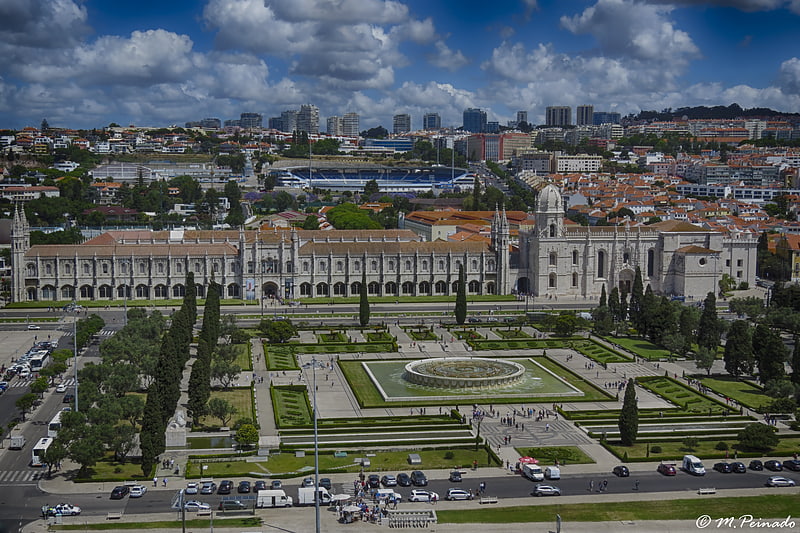
World heritage listed Gothic monastery. The Jerónimos Monastery or Hieronymites Monastery is a former monastery of the Order of Saint Jerome near the Tagus river in the parish of Belém, in the Lisbon Municipality, Portugal; it was secularised on 28 December 1833 by state decree and its ownership transferred to the charitable institution, Real Casa Pia de Lisboa.
The monastery is one of the most prominent examples of the Portuguese Late Gothic Manueline style of architecture in Lisbon. It was classified a UNESCO World Heritage Site, along with the nearby Tower of Belém, in 1983.[2]
Address: Praca do Imperio, 1400-206 Lisbon (Belém)
Lisbon Oceanarium
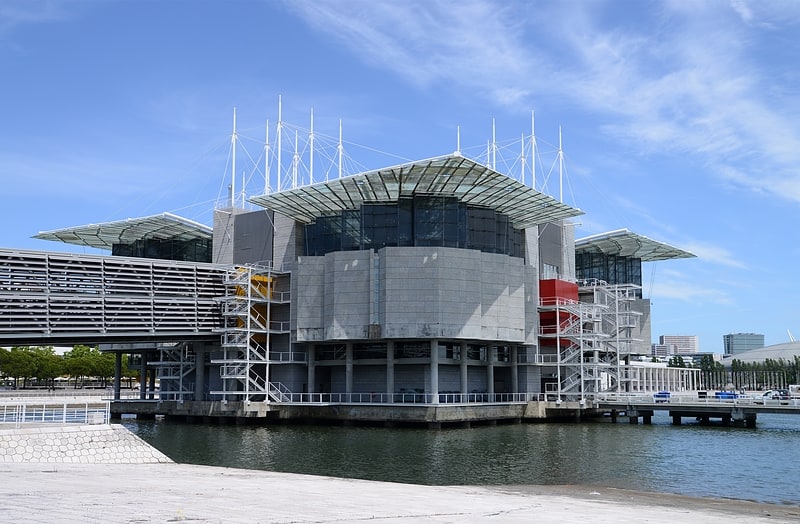
Also known as: Oceanário de Lisboa
Waterside aquarium with ocean ecosystems. The Lisbon Oceanarium is an oceanarium in Lisbon, Portugal. It is located in the Parque das Nações, which was the exhibition grounds for the Expo '98. It is the largest indoor aquarium in Europe.[3]
Address: Esplanada Dom Carlos I s/nº, 1990-005 Lisboa
Museu Coleção Berardo
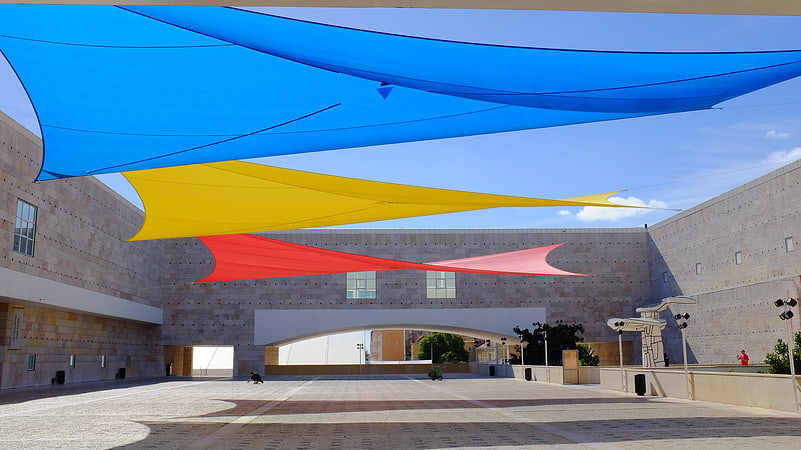
Museum of modern and contemporary art. The Berardo Collection Museum is a museum of modern and contemporary art in Belém, a district of Lisbon, Portugal.[4]
Address: Praça do Império, 1449-003 Lisboa (Belém)
Padrão dos Descobrimentos

Also known as: Monumento aos Descobrimentos
Concrete monument to maritime explorers. Padrão dos Descobrimentos is a monument on the northern bank of the Tagus River estuary, in the civil parish of Santa Maria de Belém, Lisbon. Located along the river where ships departed to explore and trade with India and the Orient, the monument celebrates the Portuguese Age of Discovery during the 15th and 16th centuries.[5]
Address: Av. Brasília, 1400-038 Lisboa (Belém)
Palácio Nacional da Ajuda
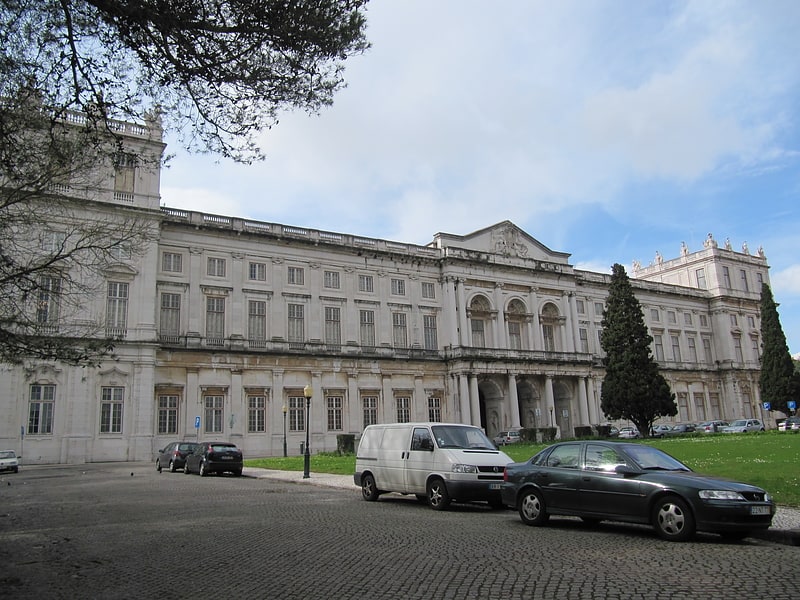
19th-century royal palace now museum. The Palace of Ajuda is a neoclassical monument in the civil parish of Ajuda in the city of Lisbon, central Portugal. Built on the site of a temporary wooden building constructed to house the Royal family after the 1755 earthquake and tsunami, it was originally begun by architect Manuel Caetano de Sousa, who planned a late Baroque-Rococo building. Later, it was entrusted to José da Costa e Silva and Francisco Xavier Fabri, who planned a magnificent building in the modern neoclassical style.
Over time, the project underwent several periods when the construction was stopped or slowed due to financial constraints or political conflicts. When the Royal Family had to flee to Brazil (in 1807), following the invasion of Portugal by French troops, the work proceeded very slowly with Fabri taking charge of the project, later followed by António Francisco Rosa. Lack of financial resources would also result in the scaling down of the project. The construction of the Ajuda Palace, which began in 1796 and lasted until the late 19th century, was a project plagued by various political, economic and artistic/architectural problems. It was invaded by Napoleon's troops in 1807, and discontinued by Liberal forces who imposed a constitutional monarchy that reduced the power of the royal family. Artistically, it was a convergence of the Baroque styles from Mafra, very connected to regal authority, with the birth of the Neoclassic style from Italy. Further interruptions occurred, due to a lack of funds, political sanctions or disconnection between the workers and the authorities responsible for the project. The project was modified several times, but was generally authored by Manuel Caetano de Sousa (the last Baroque architect) and, later, Costa e Silva and Fabri, both of them Bolognese architects whose tastes crossed the architectural spectrum, but in which Neoclassicism predominated.
When the palace finally became a permanent residence of the royal family during the reign of King Luis I and his wife, Maria Pia of Savoy, their architect, Possidónio da Silva, introduced many aesthetic changes and turned one of the lateral façades into the main one.
Most of the palace interiors were designed during King Luis I’s reign by his wife, Queen Maria Pia and Possidónio da Silva.
Maria Pia lived in the palace from the day she became Queen of Portugal, in 1862, until the republican Revolution in 1910, when the royal family was forced into exile.[6]
Address: Largo Ajuda 1349-021, 1300 Lisboa
Cristo Rei
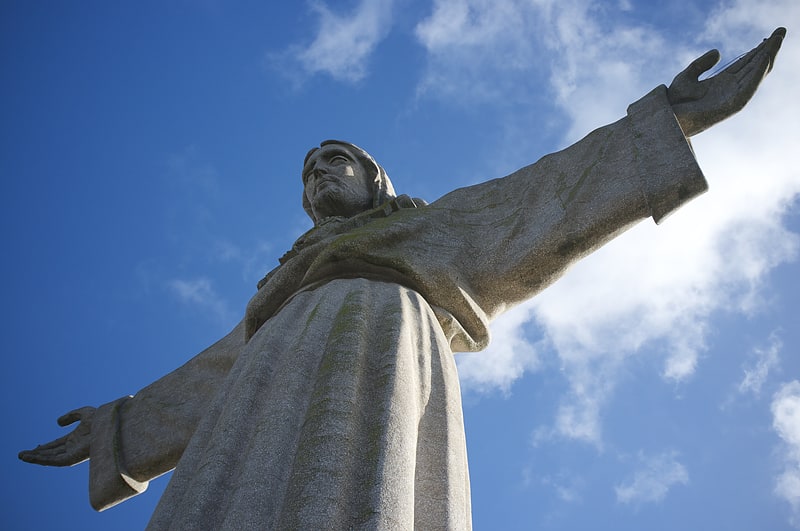
Monument and shrine overlooking city. The Sanctuary of Christ the King is a Catholic monument and shrine dedicated to the Sacred Heart of Jesus Christ overlooking the city of Lisbon situated in Almada, in Portugal. It was inspired by the Christ the Redeemer statue of Rio de Janeiro, in Brazil, after the Cardinal Patriarch of Lisbon visited that monument. The project was inaugurated on 17 May 1959. The giant statue was erected to express gratitude because the Portuguese were spared the direct destructive effects of World War II.[7]
Address: Av. do Cristo Rei 63, 2800-058 Almada
Arco da Rua Augusta

Triumphal arch with a viewing platform. The Rua Augusta Arch is a stone, triumphal arch-like, historical building and visitor attraction in Lisbon, Portugal, on the Praça do Comércio. It was built to commemorate the city's reconstruction after the 1755 earthquake. It has six columns and is adorned with statues of various historical figures. Significant height from the arch crown to the cornice imparts an appearance of heaviness to the structure. The associated space is filled with the coat of arms of Portugal. The allegorical group at the top, made by French sculptor Célestin Anatole Calmels, represents Glory rewarding Valor and Genius.
Originally designed as a bell tower, the building was ultimately transformed into an elaborate arch after more than a century.[8]
Address: R. Augusta 2, 1100-053 Lisboa (Santa Maria Maior)
Elevador de Santa Justa

1902-built elevator linking city levels. The Santa Justa Lift, also called Carmo Lift, is an elevator, or lift, in the civil parish of Santa Justa, in the historic center of Lisbon, Portugal. Situated at the end of Rua de Santa Justa, it connects the lower streets of the Baixa with the higher Largo do Carmo.
Since its construction the lift has become a tourist attraction for Lisbon as, among the urban lifts in the city, Santa Justa is the only remaining vertical (conventional) one. Others, including Elevador da Glória and Elevador da Bica, are actually funicular railways, and the other lift constructed around the same time, the Elevator of São Julião, has since been demolished.[9]
Address: Lg. do Carmo / R. do Ouro, 1100 Lisboa (Santa Maria Maior)
São Jorge Castle
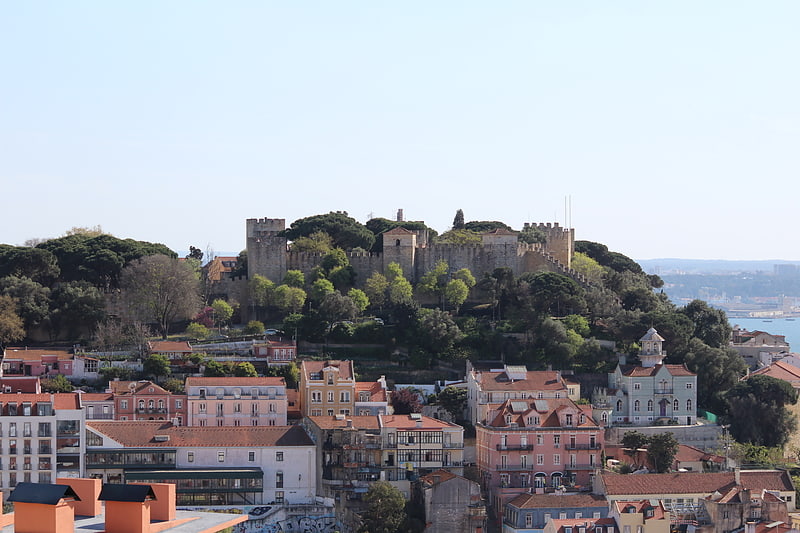
Also known as: Castelo de São Jorge
Hilltop Moorish castle with palace ruins. São Jorge Castle is a historic castle in the Portuguese capital of Lisbon, located in the freguesia of Santa Maria Maior. Human occupation of the castle hill dates to at least the 8th century BC while the first fortifications built date from the 1st century BC. The hill on which São Jorge Castle stands has played an important part in the history of Lisbon, having served as the location of fortifications occupied successively by Phoenicians, Carthaginians, Romans, and Moors, before its conquest by the Portuguese in the 1147 Siege of Lisbon. Since the 12th century, the castle has variously served as a royal palace, a military barracks, home of the Torre do Tombo National Archive, and now as a national monument and museum.[10]
Address: R. de Santa Cruz do Castelo, 1100-129 Lisboa (Santa Maria Maior)
Macau Scientific and Cultural Centre Museum
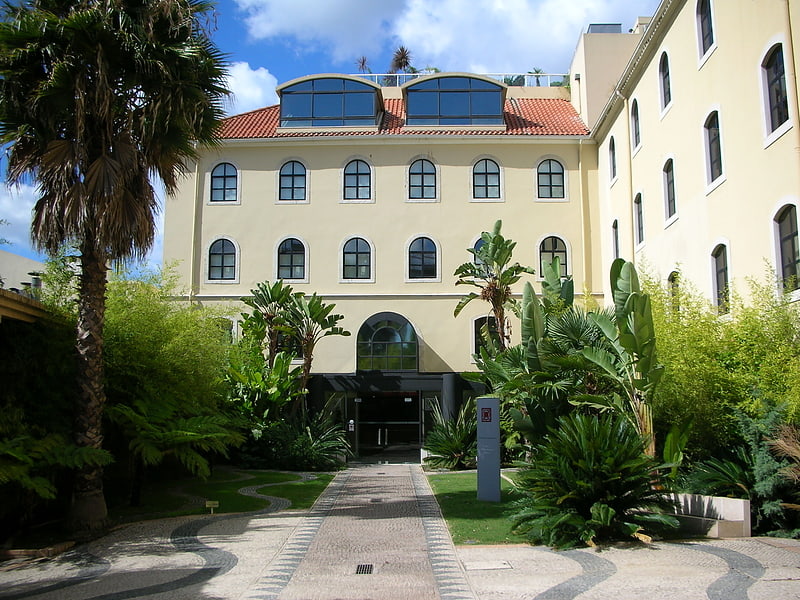
Museum in Lisbon, Portugal. The Macau Scientific and Cultural Centre Museum in Lisbon is Portugal's main museum of Chinese artefacts and artworks. Made to document Sino-Portuguese relations, the museum contains over 3,500 works of art including decorative artwork, costumes, a collection of opium-smoking paraphernalia and an important extensive collection of Chinese ceramics.
The museum comprises two distinct and complementary sections, a section on the Historical and Cultural Condition of Macau in the 16th and 17th Centuries on the ground floor and a section in its Chinese Art Collection on the first floor.[11]
Address: 30 Rua da Junqueira, Lisbon
Carmo Convent

Also known as: Convento do Carmo
Convent in Lisbon, Portugal. The Convent of Our Lady of Mount Carmel is a former Catholic convent located in the civil parish of Santa Maria Maior, municipality of Lisbon, Portugal. The medieval convent was ruined during the sequence of the 1755 Lisbon earthquake, and the destroyed Gothic Church of Our Lady of Mount Carmel on the southern facade of the convent is the main trace of the great earthquake still visible in the old city.[12]
Address: Largo do Carmo, 1200-092 Lisboa (Santa Maria Maior)
National Archaeology Museum
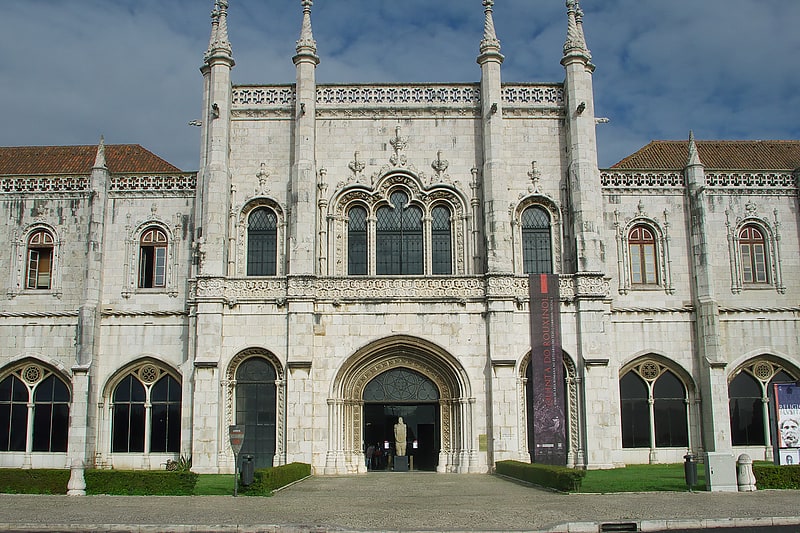
Also known as: Museu Nacional de Arqueologia
Prominent archaeological museum. The National Museum of Archaeology is the largest archaeological museum in Portugal and one of the most important museums devoted to ancient art found in the Iberian Peninsula. Located in Lisbon, the museum was founded in 1893 by the archaeologist José Leite de Vasconcelos. The museum is located in the western wing of the Jeronimos Monastery where the monks had their dormitory. The museum is built in the Neo-Manueline style and was officially opened in 1906.
The museum is the result of José Leite de Vasconcelos's efforts to create an archaeological museum dedicated to the history of Portuguese man. With the support of the politician Bernardino Machado, a legal decree for the creation of a National Ethnographic Museum was established on 20 December 1893. The museum is the most important centre for archaeological research in Portugal. The museum has received the international Genio Protector da Colonia Augusta Emerita prize, awarded by the Foundation for Roman Studies and the Friends of the National Museum of Roman Art in Mérida, Spain.[13]
Address: Praça do Império, 1400-026 Lisboa (Belém)
Lisbon Zoo

Also known as: Jardim Zoológico de Lisboa
Zoo park with conservation program. Lisbon Zoo is a zoological garden in Lisbon, Portugal. It was founded in 1884. The zoo was originally located in the park of São Sebastião da Pedreira. The zoo moved once in 1894 and once again in 1905 to it current location at Quinta das Laranjeiras, in Sete Rios.
About 2,000 animals of more than 300 species are represented:
- Approximately
- 114 mammals
- 157 birds
- 56 reptiles
- 5 amphibians and arthropods
The mission of the Lisbon Zoo includes the conservation and breeding of endangered species, as well as scientific research, and educational and recreational activities. About 800,000 people visit the zoo annually.[14]
Address: Estrada de Benfica 158-160, 1549-004 Lisbon
Museu Benfica
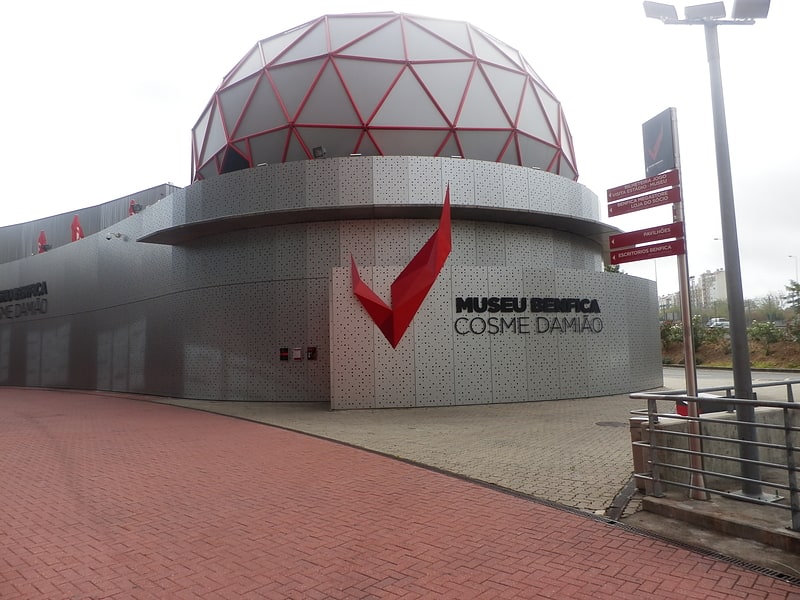
Museum in Lisbon, Portugal. The Museu Benfica – Cosme Damião is the museum of Portuguese sports club S.L. Benfica. Named after Cosme Damião, one of the club's founders in 1904, the museum was inaugurated on 26 July 2013 under the presidency of Luís Filipe Vieira and opened to the public on 29 July, one year and three months after the start of construction.
Located near Benfica's stadium, the building occupies 4,000 square metres and is composed of three floors, which are accompanied by a huge vertical parallelepiped made of glass exhibiting roughly 500 trophies won by the club. The museum is split into 29 thematic areas containing around 1,000 pieces from a collection of 30,000, including trophies, documents, images, audio and video related to the history of Benfica, contextualised into domestic and international historic events of the 20th century.
Moreover, the museum includes audiovisual touchscreens, a hologram of Eusébio, an area displaying photos of Benfica supporters and, lastly, an elevator surrounded by video walls showing messages and images of benfiquistas. This area transports visitors to a geodesic dome on the top of building, where a short film about the club's history is displayed.
On 12 December 2014, the Museu Benfica was awarded the prize for Best Portuguese Museum of 2014 by the Portuguese Association of Museology. As of 24 July 2018, the museum has had 400,000 visitors.[15]
Address: Av. Eusébio da Silva Ferreira Porta 9, 1500-313 Lisboa
Belém Palace

Also known as: Palácio Nacional de Belém
History and role of Portugal's presidents. The Belém Palace, formally the National Palace of Belém, is the current official residence of the President of the Portuguese Republic, the head of state of Portugal. Located in the Belém District of Lisbon, the palace's main façade fronts the Praça Afonso de Albuquerque, facing the Tagus River. A former residence of the Portuguese Royal Family, the Belém Palace complex is made up of various buildings, wings, courtyards, and gardens, built variously from the 18th to 21st centuries.[16]
Address: Praça Afonso de Albuquerque, 1300-004 Lisboa (Belém)
Campo Pequeno bullring
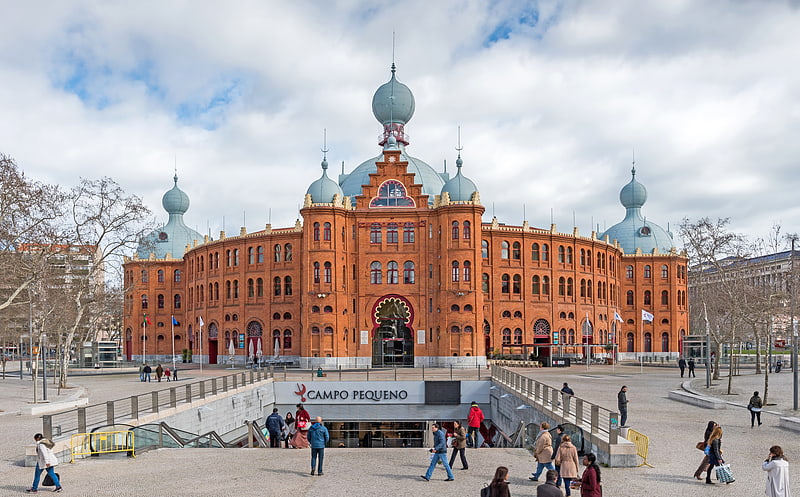
Also known as: Praça de Touros do Campo Pequeno
Movie theater in Lisbon, Portugal. The Campo Pequeno Bullring is the bullring of Lisbon, Portugal. It is located in the Campo Pequeno Square, by the Avenida da República.
After a profound renovation, it re-opened as a multi-event venue in 2006, designed to be used for various events apart from bullfighting. It hosts a range of live acts and has seen many famous bands perform there. It includes an underground shopping centre, a cinema, restaurants and a parking lot.[17]
Address: Av. República, 1000-082 Lisboa (Avenidas Novas)
Monastery of São Vicente de Fora
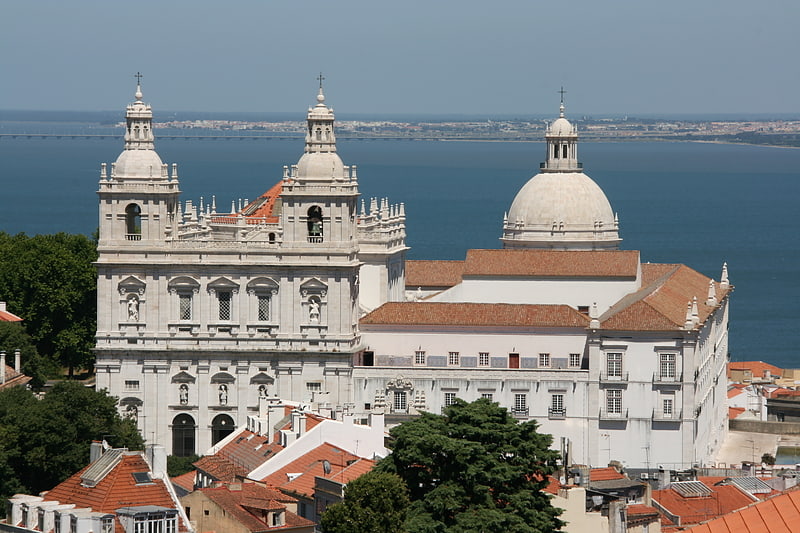
Also known as: Igreja de São Vicente de Fora
Stylish mannerist church and monastery. The Church or Monastery of São Vicente de Fora, meaning "Monastery of St. Vincent Outside the Walls", is a 17th-century church and monastery in the city of Lisbon, Portugal. It is one of the most important monasteries and mannerist buildings in the country. The monastery also contains the royal pantheon of the Braganza monarchs of Portugal.[18]
Address: Largo Sao Vicente, 1100-572 Lisbon (São Vicente)
Parque das Nações
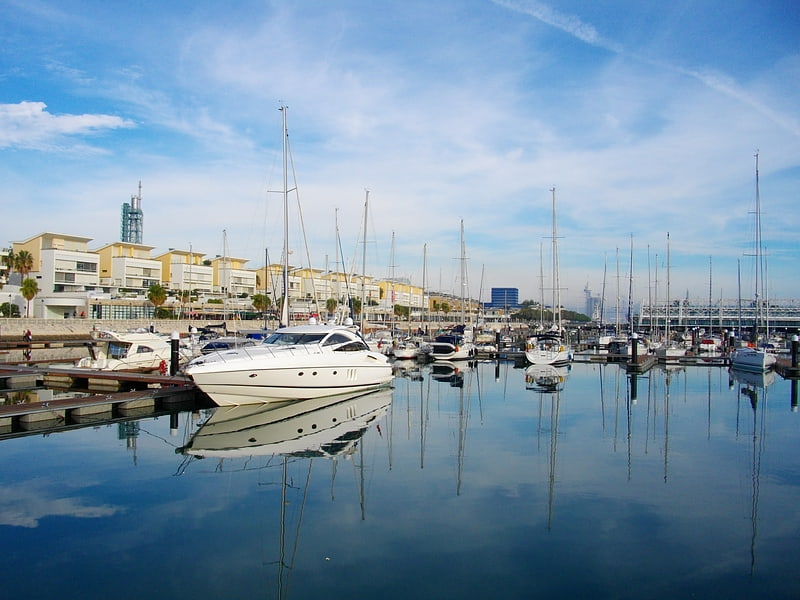
The Parque das Nações, colloquially known as Expo, is a freguesia of Lisbon, the capital of Portugal. Located in eastern Lisbon, Parque das Nações is to the east of Olivais, north of Marvila, and directly south of Lisbon's border with Loures. As of 2018, an estimated 31,000 people live in the area.[19]
Palacio do Grilo
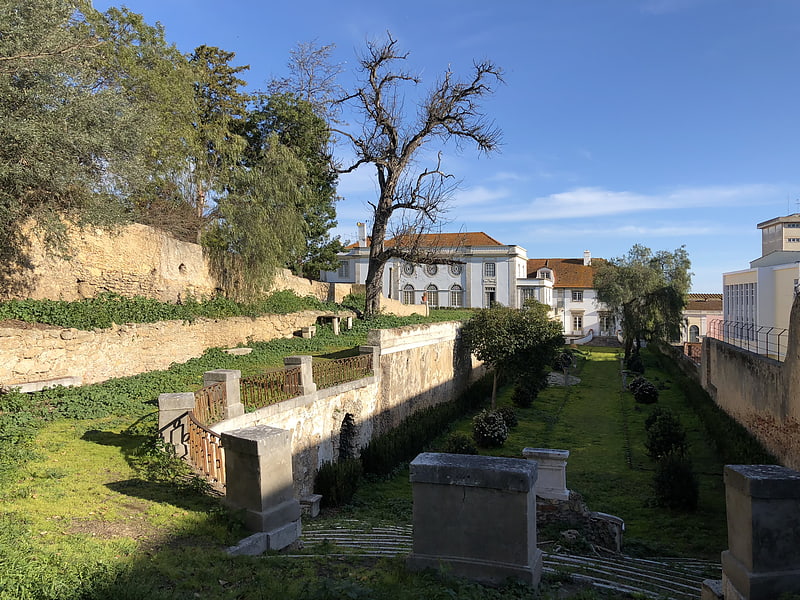
Palácio do Grilo classified as Public Interest Monument since 2011, also known as the Palace of the Dukes of Lafões, is located at the corner of Grilo Street with the Dukes of Lafões Sidewalk, standing in the Beato parish in the heart of the city of Lisbon.
The structure constitutes an architectural complex of the 18th century and predominantly Neoclassic style punctuated by baroque expressions and motifs. The construction of the building is intimately related to a few historical contingencies that have witnessed the Palace's extensive erection process.[20]
Address: 34 Rua do Grilo, Lisbon
Lisbon Cathedral
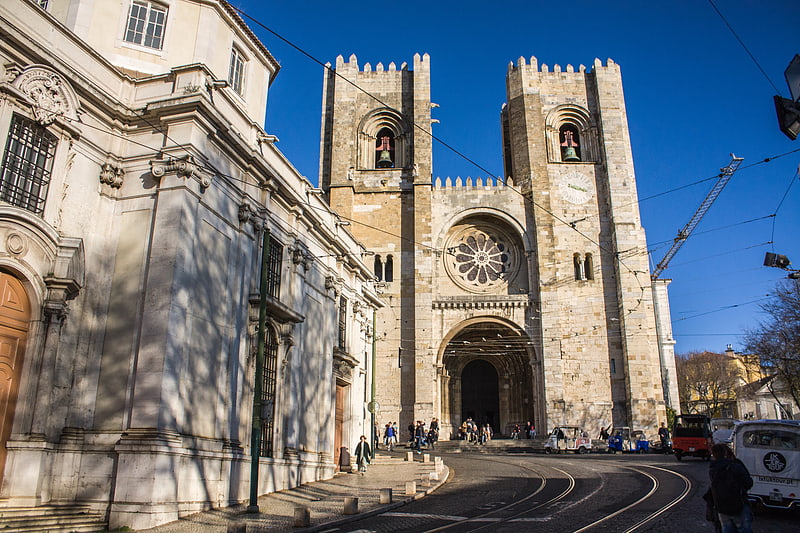
Also known as: Sé de Lisboa
Latin-cross-shape 12th-century cathedral. The Cathedral of Saint Mary Major, often called Lisbon Cathedral or simply the Sé, is a Roman Catholic cathedral located in Lisbon, Portugal. The oldest church in the city, it is the seat of the Patriarchate of Lisbon. Built in 1147, the cathedral has survived many earthquakes and has been modified, renovated and restored several times. It is nowadays a mix of different architectural styles. It has been classified as a National Monument since 1910.[21]
Address: Largo da Sé, 1100-585 Lisboa (Santa Maria Maior)
Estádio das Amoreiras
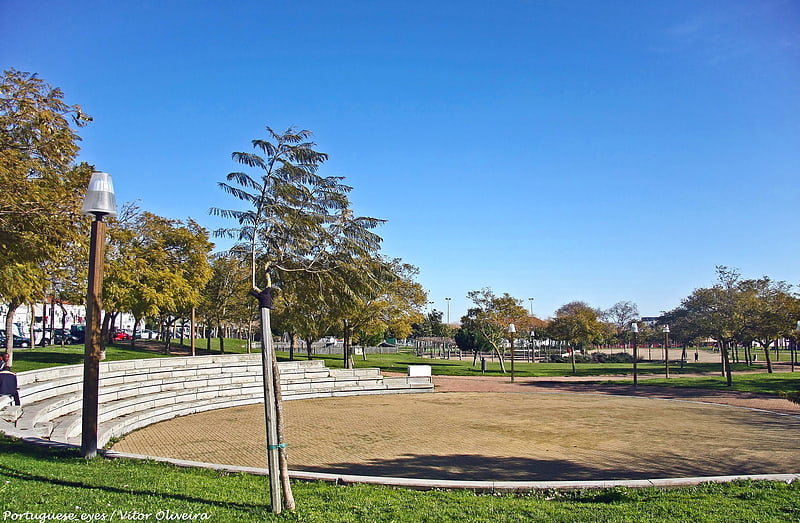
Stadium in Portugal. Estádio das Amoreiras, also known as Campo das Amoreiras, was a multi-use stadium in Lisbon, Portugal. It was used mostly for football matches and hosted the home games of S.L. Benfica. Opened in 1925, the stadium was able to hold 20,000 spectators. It was demolished in 1940 to make way for a freeway. Benfica would then move to Estádio do Campo Grande.[22]
Address: R. Carlos Alberto da Mota Pinto 4B, 1250-252 Lisboa (Campo de Ourique)
Panteão Nacional
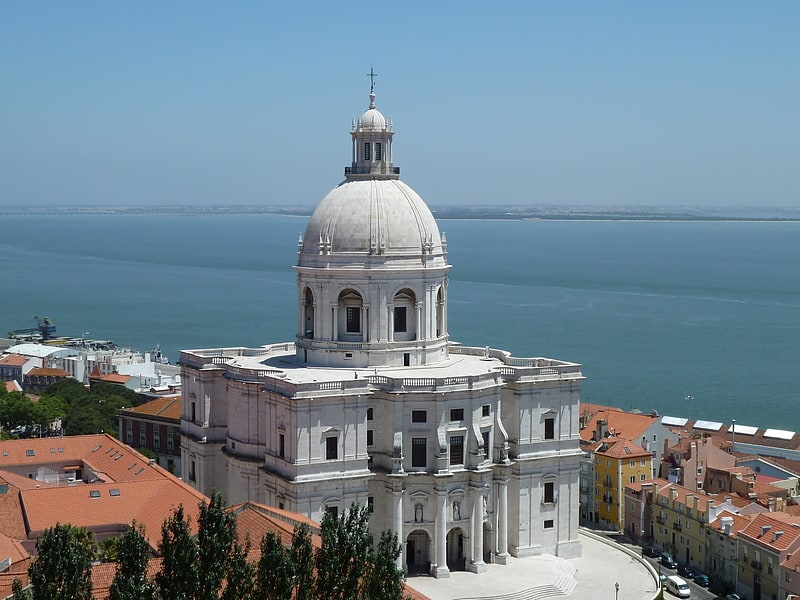
Celebrity tombs in a 17th-century church. The Church of Santa Engrácia is a 17th-century monument in Lisbon, Portugal. Originally a church it was converted into the National Pantheon, in which important Portuguese personalities are buried. It is located in the Alfama neighborhood, close to another important Lisbon monument, the Monastery of São Vicente de Fora.[23]
Address: Campo de Santa Clara, 1100-471 Lisboa (São Vicente)
Museu Nacional do Azulejo
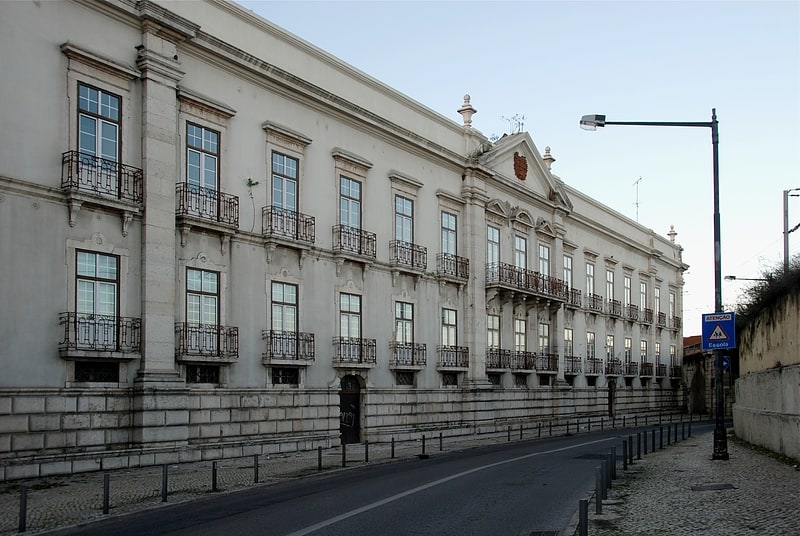
Ceramic collections in ornate church. The Museu Nacional do Azulejo, occasionally known in English as the National Tile Museum, is an art museum in Lisbon, Portugal dedicated to the azulejo, traditional tilework of Portugal and the former Portuguese Empire, as well as of other Iberophone cultures. Housed in the former Madre de Deus Convent, the museum's collection is one of the largest of ceramics in the world.[24]
Address: R. Me. Deus 4, 1900-312 Lisboa
Lisboa Story Centre
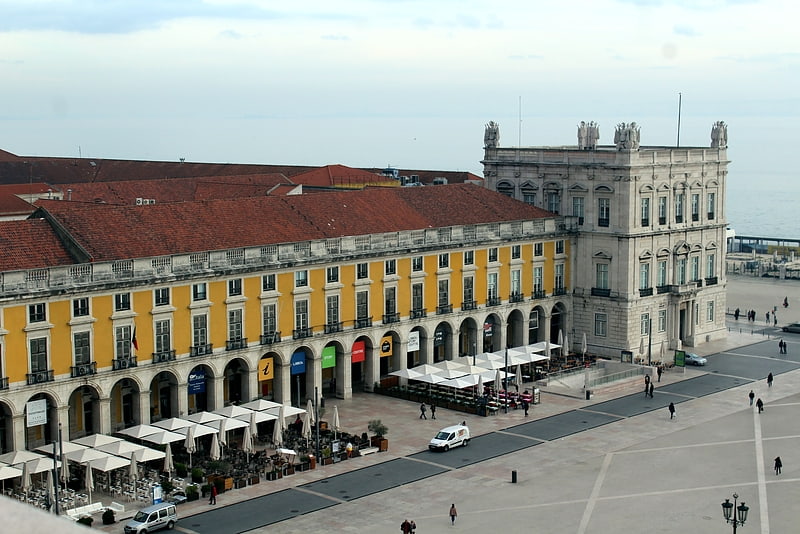
Museum, History museum, Classes and workshops, Event space
Address: Terreiro do Paco, 78- 81, 1100-148 Lisbon (Santa Maria Maior)
Santo António Church

Also known as: Igreja de Santo António de Lisboa
18th-century baroque Catholic church. The Church of Saint Anthony of Lisbon is a Roman Catholic church located in Lisbon, Portugal. It is dedicated to Saint Anthony of Lisbon. According to tradition, the church was built on the site where the saint was born, in 1195. The church is classified as a National Monument.[25]
Address: Largo de Santo António da Sé, 1100-401 Lisboa (Santa Maria Maior)
25 de Abril Bridge
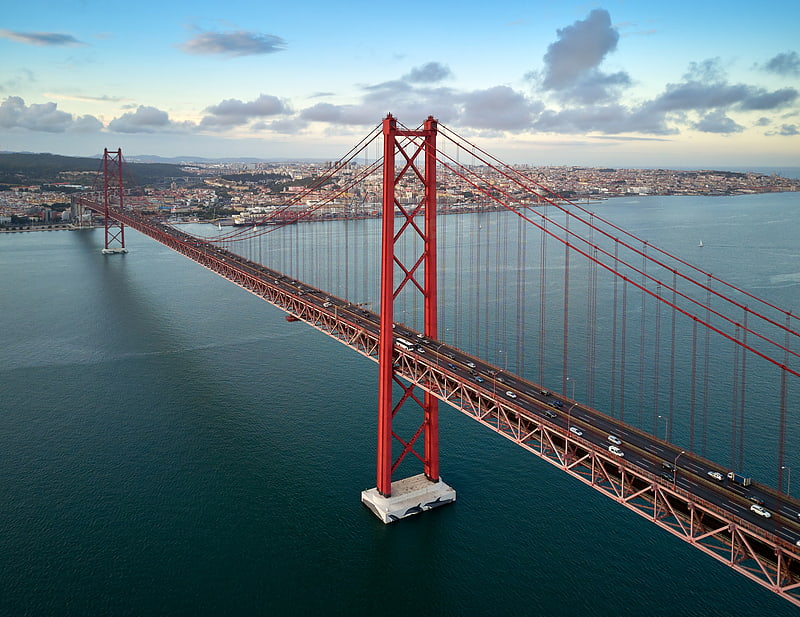
Also known as: Ponte 25 de Abril
Vast suspension bridge opened in 1966. The 25 de Abril Bridge is a suspension bridge connecting the city of Lisbon, capital of Portugal, to the municipality of Almada on the left bank of the Tagus river. It has a total length of 2,277 metres, making it the 43rd longest suspension bridge in the world.
From its inauguration in 6 August 1966 up to 1974, the bridge was named Salazar Bridge (Ponte Salazar), after Portuguese Prime Minister António de Oliveira Salazar, who ordered its construction. After the Carnation Revolution, which overthrew the remnants of Salazar's regime, the bridge was renamed for April 25, the date of the revolution. It is also commonly called the Tagus River Bridge (in Portuguese: Ponte sobre o Tejo = "bridge over the Tagus").
Later changes had to be made due to the rapid increase in population. In the 1990s, a fifth car lane was added, and in 1999, a lower deck, used as a railway track, which was planned since the beginning, was finally built. Today, the upper deck carries six car lanes while the lower deck carries a double track railway, electrified at 25 kV AC.[26]
Address: Praça Portagens, Lisbon
Rossio Square

Also known as: Praça D. Pedro IV
The Rossio is the popular name of the King Pedro IV Square in the city of Lisbon, in Portugal. It is located in the Pombaline Downtown of Lisbon and has been one of its main squares since the Middle Ages. It has been the setting of popular revolts and celebrations, bullfights and executions, and is now a preferred meeting place of Lisbon natives and tourists alike.
The current name of the Rossio pays homage to Pedro IV, King of Portugal. The Column of Pedro IV is in the middle of the square.[27]
Belém Cultural Center
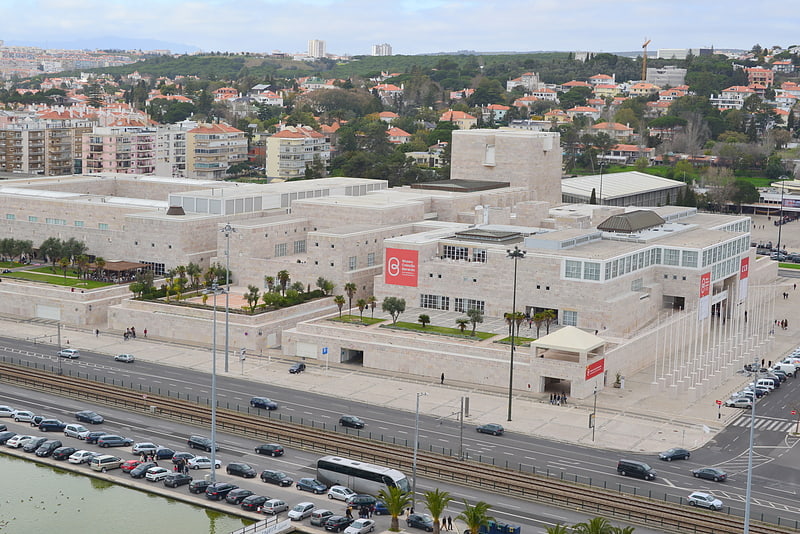
Also known as: Centro Cultural de Belém
Conference, exhibition and arts complex. The Belém Cultural Center, is a complex of artistic venues located in Belém in the city of Lisbon. It is the largest building with cultural facilities in Portugal, with over 140,000 m2 of usable space. The centre was initially built to accommodate the programme of Portugal's Presidency of the European Council in 1992, but with the long-term goal of providing permanent venues for conferences, exhibitions and performance arts, in addition to meeting halls, shops and cafés.[28]
Address: Praca Imperio, 1449-003 Belem (Belém)
Calouste Gulbenkian Museum
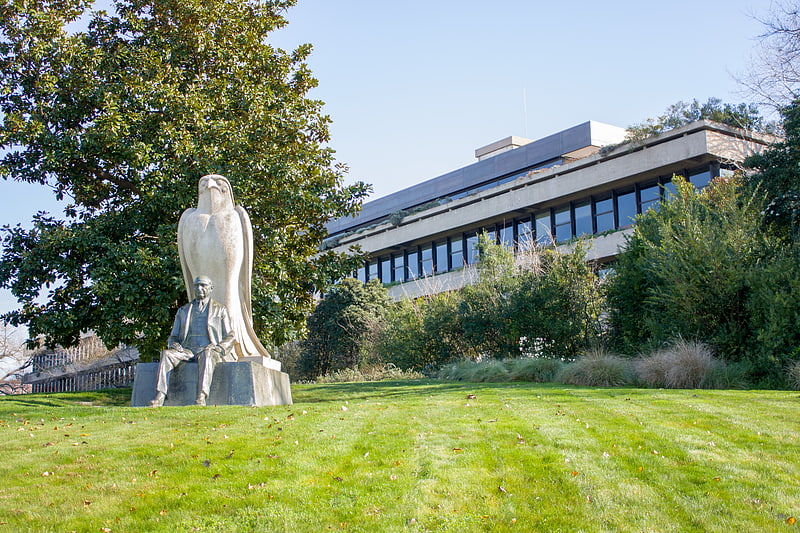
Also known as: Museu Calouste Gulbenkian
Oil magnate's global art collection. The Calouste Gulbenkian Museum houses one of the world's most important private art collections. It includes works from Ancient Egypt to the early 20th century, spanning the arts of the Islamic World, China and Japan, as well as the French decorative arts, Impressionist painting and the jewellery of René Lalique.[29]
Address: Av. de Berna 45A, 1067-001 Lisboa (Avenidas Novas)
Praça do Comércio

Public square lined with shops and cafes. The Praça do Comércio is a large, harbour-facing plaza in Portugal's capital, Lisbon, and is one of the largest in Portugal, with an area of 175 by 175 m, that is, 30,600 m2.
Facing the Tagus (Tejo) to the South, the plaza is still commonly known in Portuguese as Terreiro do Paço ((transl. Palace Yard), as it hosted the Paço da Ribeira (transl. Royal Palace of Ribeira) until the latter was destroyed by the great 1755 Lisbon earthquake (the subway station located there is still named after the old name of the plaza).
After the earthquake, the plaza was completely remodeled as part of the rebuilding of the Pombaline Downtown (Baixa), ordered by Sebastião José de Carvalho e Melo, 1st Marquis of Pombal, who was (chief) Minister of Portugal from 1750 to 1777, during the reign of the Portuguese King José I.
From the 19th century onwards, Praça do Comércio became the seat of some of the most important Portuguese state departments, including the Ministries of Finances, Internal Affairs, Agriculture and Sea; before the Carnation Revolution (1974) and the creation of a unified Ministry of Defence, it was also the location of the War and Navy Ministries, as well as the old Ministry of Colonies (up to 1967), and thus also became a methonym for the Portuguese central government. Also housed there is the Supreme Court.
In June 1910, just a few months before the establishment of the Portuguese Republic, Praça do Comércio was classified as a National Monument of Portugal.[30]
Pillory of Lisbon
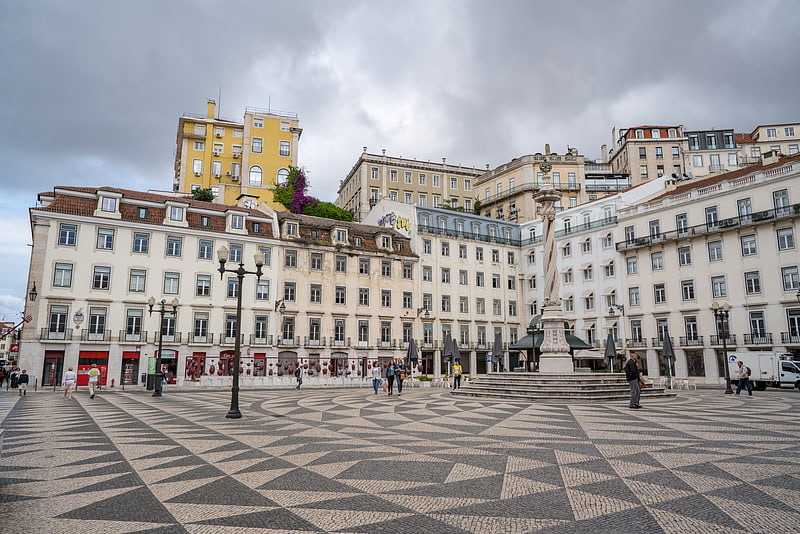
Historical landmark in Lisbon, Portugal. The Pillory of Lisbon is a pillory situated in the municipal square of the Portuguese capital, classified as a National Monument.[31]
Verride Palace
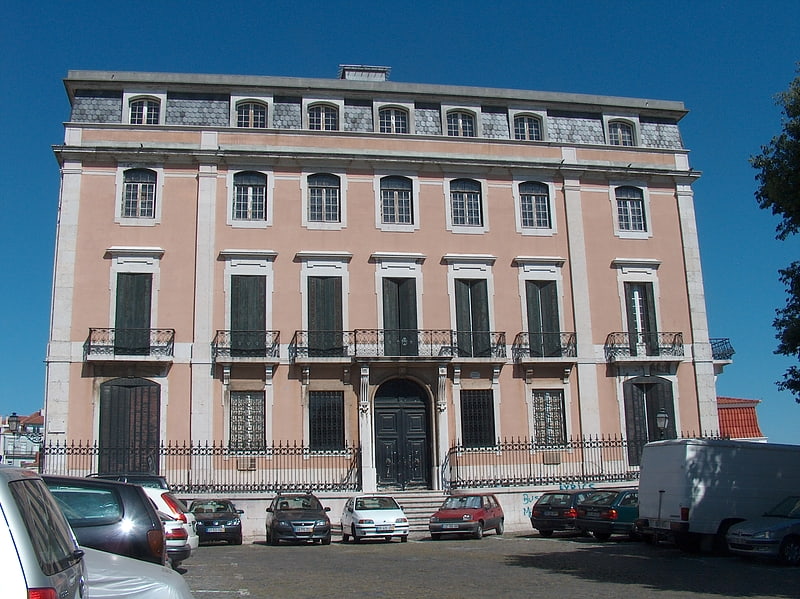
Verride Palace, or the Palace of Santa Catarina, is an 18th-century Portuguese palace located in Lisbon, Portugal.[32]
Address: Rua de Santa Catarina 1200-403 LISBOA, Lisbon (Misericórdia)
Graça Convent

Graça Convent is one of the oldest convents in Lisbon. It is located in Largo da Graça, in the parish of São Vicente, on Lisbon's highest hill. It faces a belvedere overlooking the city and the Tagus River. It belonged to the Order of Saint Augustine Hermits and at one time served as their headquarters in Portugal.[33]
Address: Largo da Graça, Lisbon (São Vicente)
Camões Monument
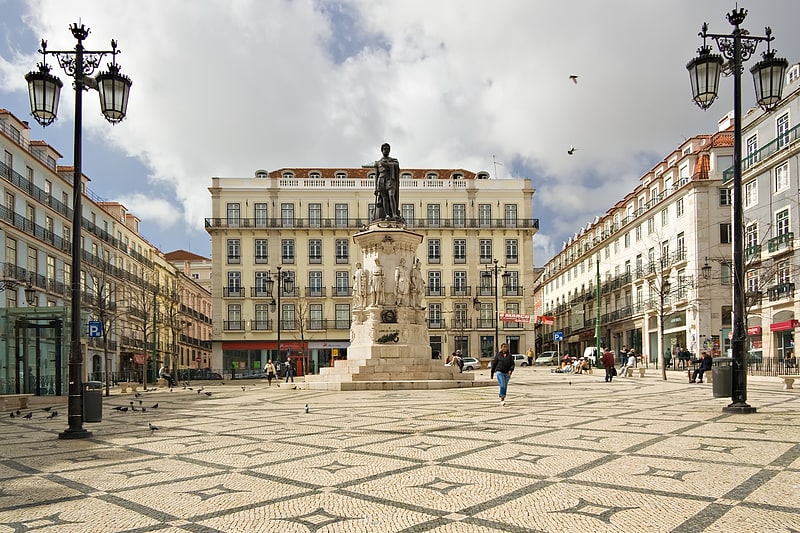
The Camões Monument is a monument located in Luís de Camões Square in the Chiado neighbourhood of Lisbon, Portugal. The monument comprises a tall bronze statue of Luís de Camões, the national poet, on a lioz limestone pillar surrounded by eight smaller statures of leading figures of Portuguese culture and literature in the Age of Discoveries: Fernão Lopes, Pedro Nunes, Gomes Eanes de Zurara, João de Barros, Fernão Lopes de Castanheda, Vasco Mouzinho de Quevedo, Jerónimo Corte-Real, and Francisco de Sá de Meneses.
The monument was sculpted by Victor Bastos and unveiled in 1867, in the presence of King Luís I and his father, Ferdinand II.[34]
Address: Largo do Calhariz, 17 - 1º Esq, Lisbon (Misericórdia)